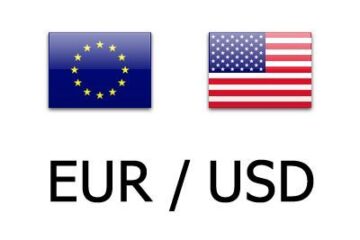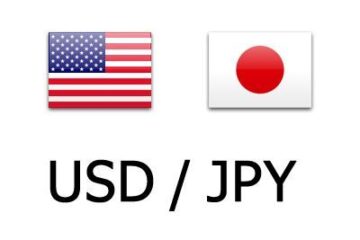Making a tech company successful isn’t easy. Keeping it successful is even more difficult.
A company that launches a successful product in huge demand can easily become complacent, giving competitors an opportunity to enter its space. Don’t believe me? Just think of Nokia and BlackBerry’s reactions to the launch of the iPhone.
Great companies don’t allow the competition to out-innovate; so far, that’s been true of Nvidia. Nvidia’s CEO, Jensen Huang, has shown an uncanny knack for knowing when it’s time to pivot or innovate, such as recognizing that the key to its success wasn’t simply fast semiconductor chips, but software too.
💵💰Don’t miss the move: Subscribe to TheStreet’s free daily newsletter 💰💵
For instance, early on in the video gaming era of the company, it was all about graphics card drivers. Nvidia’s release of the CUDA software development kit in 2007 sparked a significant shift by enabling general-purpose parallel programming on GPUs.
In layman’s terms, CUDA made it possible to write applications that can “crunch the numbers” on many GPU cores, making calculations much faster than on the CPU.
This technology enabled Nvidia to capture the market quickly, and due to CUDA’s proprietary nature, switching to competing products was difficult.
Its success in super-fast chips and software eventually allowed it to exploit the crypto boom successfully, as crypto miners flocked to its solution to mine digital currencies more efficiently. More recently, that advantage has also allowed it to profit handsomely from the boom in artificial intelligence – after all, CUDA supports neural networks.
Of course, it hasn’t all been smooth sailing for Nvidia, including this year. The company is under pressure because of export restrictions on selling its AI chips in China.
Nvidia revenue increased 69% year over year to $44.1 billion.
SAM YEH/AFP via Getty Images
Nvidia revenue increased 69% year over year to $44.1 billion
Nvidia released its earnings for Q1 fiscal 2026 on May 28, and while they reported revenue of $44.1 billion, with an impressive yearly growth of 69%, the release also contained a note that worried some investors.
The U.S. government announced it would require a license to export Nvidia’s H20 chip to China, making Nvidia unable to ship an additional $2.5 billion worth of H20 products during Q1.
Related: Surprising guidance sends CrowdStrike stock reeling
Those restrictions are expected to weigh down Nvidia’s results in Q2. Still, management’s fiscal second quarter outlook remains impressive:
Revenue is expected to be $45.0 billion, plus or minus 2%.GAAP gross margins are expected to be 71.8%, plus or minus 50 basis points.
Following the earnings report, Nvidia and Dell announced they are building a supercomputer for NERSC, a U.S. Department of Energy user facility at Berkeley Lab.
Investing expert James “Rev Shark” DePorre, recently wrote on TheStreet Pro “Nvidia is the driving force behind the infrastructure needed for AI. It dominates the semiconductor market and is at the cutting edge of innovation.”
More Nvidia:
Analysts issue rare warning on Nvidia stock before key earningsAnalysts double price target of new AI stock backed by NvidiaNvidia CEO shares blunt message on China chip sales ban
For him, Nvidia seems like a safe bet, despite its China headwinds.
Bank of America hosts dinner with Nvidia CFO, execs
Bank of America Global Research Media recently hosted Nvidia CFO Colette Kress and VP IR Toshiya Hari for an investor dinner alongside VP/GM of Hyperscale and HPC Computing Ian Buck for a keynote session in San Francisco.
At the dinner, Bank of America says Nvidia addressed three key issues:
Blackwell rack ramp/executionAI Diffusion and sovereign demandChina AI shipments
Related: Samsung adds creepy AI feature to its phones
Nvidia’s Latest-gen GB200 NVL rack-scale systems are fully ramping as of June 5, with Blackwell well on track. In fiscal Q1, Blackwell Ultra represented about 70% of compute sales. Blackwell Ultra production will begin in fiscal Q2 for a second-half volume ramp. Also, its next-gen Rubin/Feynman solution is also on track for an annual product cadence.
Third-party estimates suggest 5 to 7 gigawatts of data center capacity will be installed this year. As a result, Nvidia’s data center opportunity should be worth between $250 billion and $350 billion, with a current pipeline of approximately $175 billion.
“We view NVDA’s relationship with hyperscalers as symbiotic, offering a steady stream of compute capability that is both planned ahead and well-executed,” wrote analyst Vivek Arya.
“Post the H20 export restriction and write-offs, China is now fully de-risked for NVDA, with no China-related sales in their current Data Center forecasts,” the analyst continued.
“Meanwhile, the lift of AI Diffusion Rules opens access to sovereign AI for NVDA, offering opportunity whether directly through sovereigns, or through CSPs/neoclouds/enterprises investing on their behalf.”
In conclusion, BankofAmerica’s analyst, stated: “We maintain buy, a top sector pick with a $180 PO as we believe NVDA remains best positioned to benefit from the ongoing AI tide, supported by a multi-year lead in performance (AI scaling), pipeline, incumbency, scale, and developer support”
Related: Popular cloud storage service might be oversharing your data


